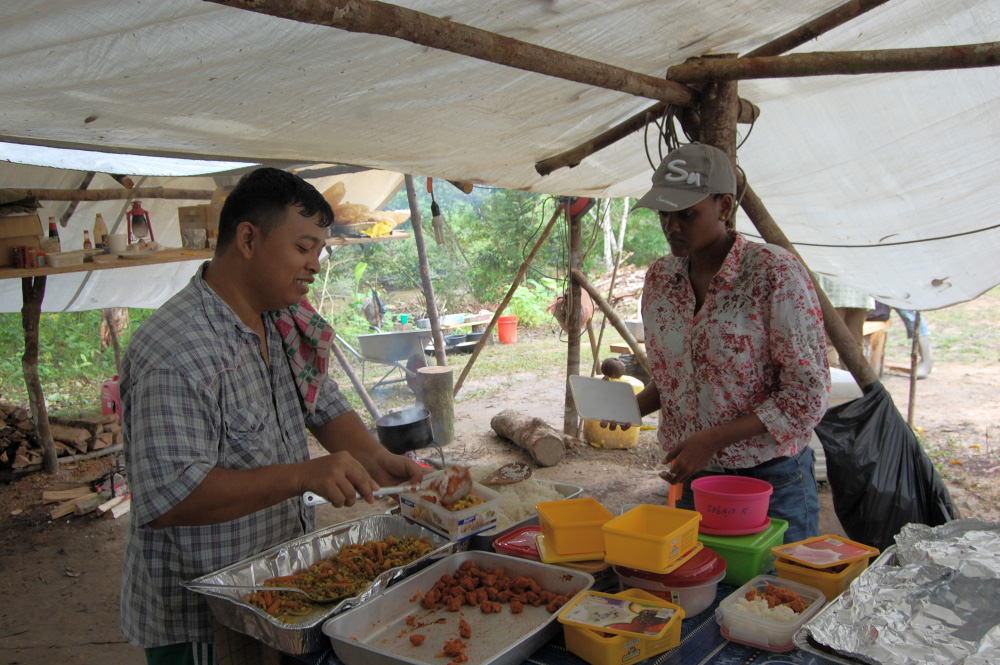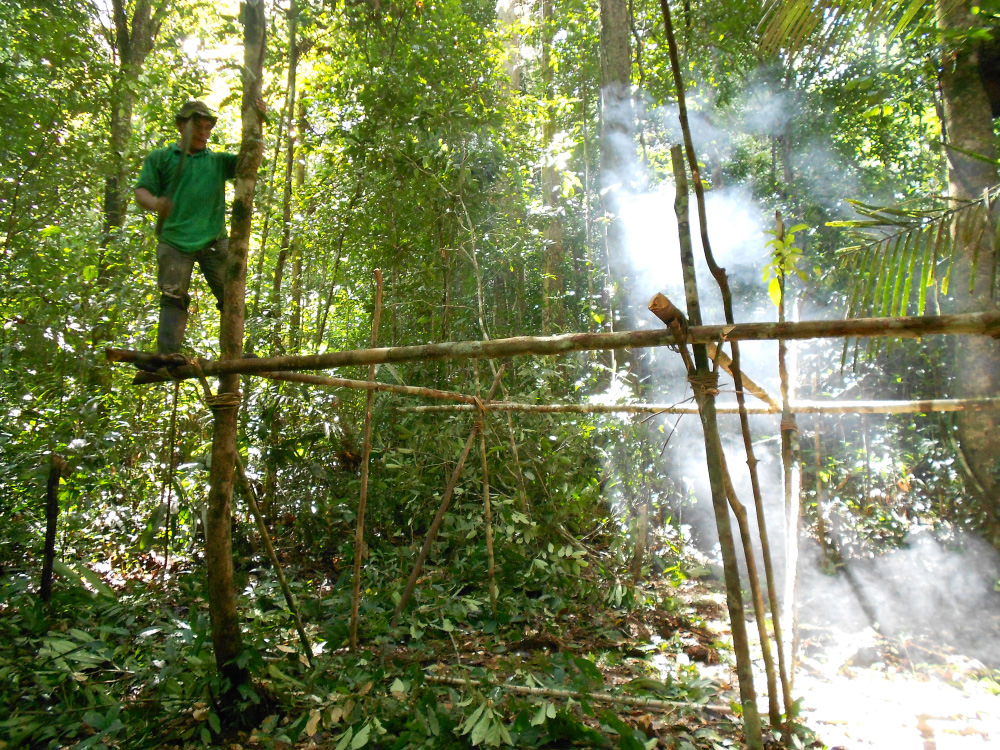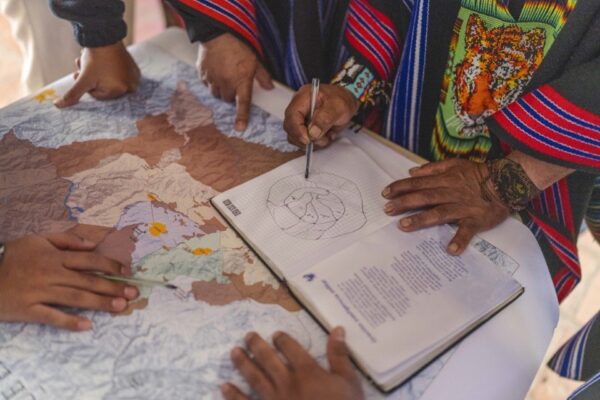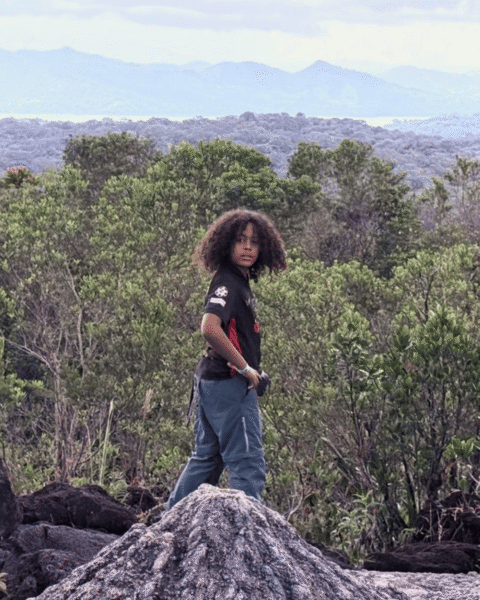It is 6 a.m. when the students wake up to the drip, drip, drip of water falling from nearby trees. It rained heavily throughout the night.
The early morning rousing is now routine for these young people—collaborators in a “twinning” (partnership) project engaging ACT Suriname and the University of Utrecht. They climb out of bed and head straight for a bath in the cold Sipaliwini River. Afterward, they are greeted with cups of tea and a hot breakfast prepared by Richard and Melvin, the camp cooks.
The students then pack up their gear and a simple lunch of rice, vegetables, and fish, and head out to create three one-kilometer-long forest transects at three, five, and seven kilometers distance from the village. Accompanied by two Indigenous Park Guards (IPGs) and ACT Suriname Biodiversity Officer Leen De Laender, they will set up camera traps along the cleared, straight paths in order to gather data on the types and quantities of wildlife in different areas.
Understanding wildlife distribution is a key part of the twinning project, which aims to create effective strategies for natural resource management. One of the primary conservation issues in Kwamalasamutu is the wildlife trade; another is the overconsumption of certain species that the locals consider delicious, such as anteater. By monitoring quantities of wildlife at several distances from the village, the team will better understand how individual species are affected by the local population.
Creating a transect involves a lot of physical labor. Once the team determines the direction of the transect with a compass, they clear away any trees and plants along the path with machetes. The beginning and end of the transect are recorded with a GPS handheld, and then the camera traps are set up.
As the day wears on, the team heads deeper into the rainforest to establish a final transect. After walking for an hour, they freeze when they hear a strange sound. The two IPGs sniff the air and say “Pingo!” (“collared peccary” in the local tongue).
“I did not know what I was hearing,” says Manuela, a Dutch student. “It’s very impressive that the IPGs knew there were collared peccaries. “
The group continues on and arrives at their destination a few hours later.
Leen and Pamenia, one of Kwamalasamutu’s IPGs, put up a field camp beside a creek while the rest of the group heads off to complete the final transect.
Just as the camp is set, Leen hears a bird and follows the sound to the other side of the creek. Quietly, she sits down among the roots of a large Ingipipa tree to see if she will spot the animal. A few seconds later, to her surprise, a jaguar emerges from behind the tree. Leen is almost eye-to-eye with the animal, which is less than six feet away. Then, the jaguar flees and is gone as quickly as it appeared.
Leen makes her way back to camp and, soon, the other group members are back from their work. That evening, they all feast on delicious soup.
After dinner, the group settles in to the chorus of the jungle fauna, wondering which of the animals they hear might be photographed by their camera traps during the night.
Dutch version can be read on the ACT-Suriname website.
Share this post
Bring awareness to our projects and mission by sharing this post with your friends.







